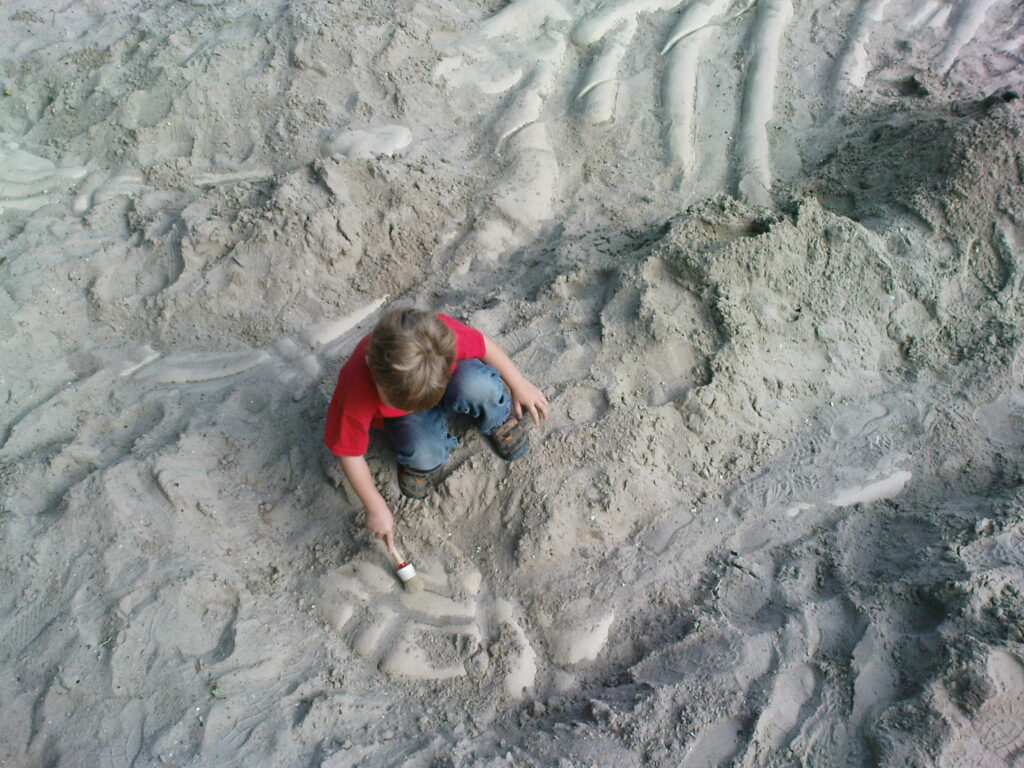North America during the Mesozoic Era was home to some of the most spectacular dinosaurs that ever walked the Earth. From ferocious predators to massive plant-eaters, these prehistoric giants shaped the continent’s ecosystems for millions of years. The fossil record across the United States and Canada has provided paleontologists with incredible insights into these magnificent creatures and their diverse adaptations. This journey through time introduces twelve remarkable dinosaur species that once dominated North American landscapes, leaving behind a legacy that continues to captivate our imagination and advance our understanding of prehistoric life.
Tyrannosaurus Rex: The Tyrant King
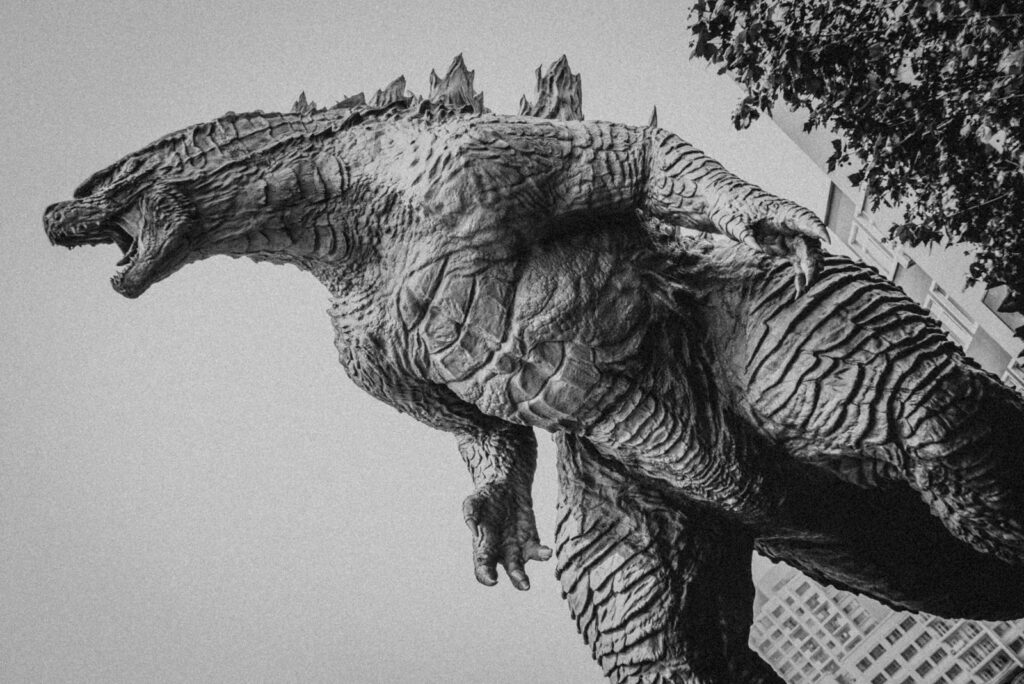
Perhaps the most famous of all North American dinosaurs, Tyrannosaurus rex ruled the western part of the continent during the late Cretaceous period, roughly 68-66 million years ago. Standing approximately 40 feet long and 12 feet tall at the hip, this massive theropod could weigh up to 9 tons in its prime. T. rex possessed one of the most powerful bites of any land animal in history, with teeth capable of crushing bone and exerting forces of up to 12,800 pounds.
Contrary to earlier depictions, modern research suggests T. rex was likely covered in patches of primitive feathers and was an opportunistic predator and scavenger. Fossil discoveries across Montana, Wyoming, and the Dakotas have provided paleontologists with several remarkably complete specimens, including the famous “Sue” skeleton discovered in South Dakota in 1990.
Triceratops: The Three-Horned Face
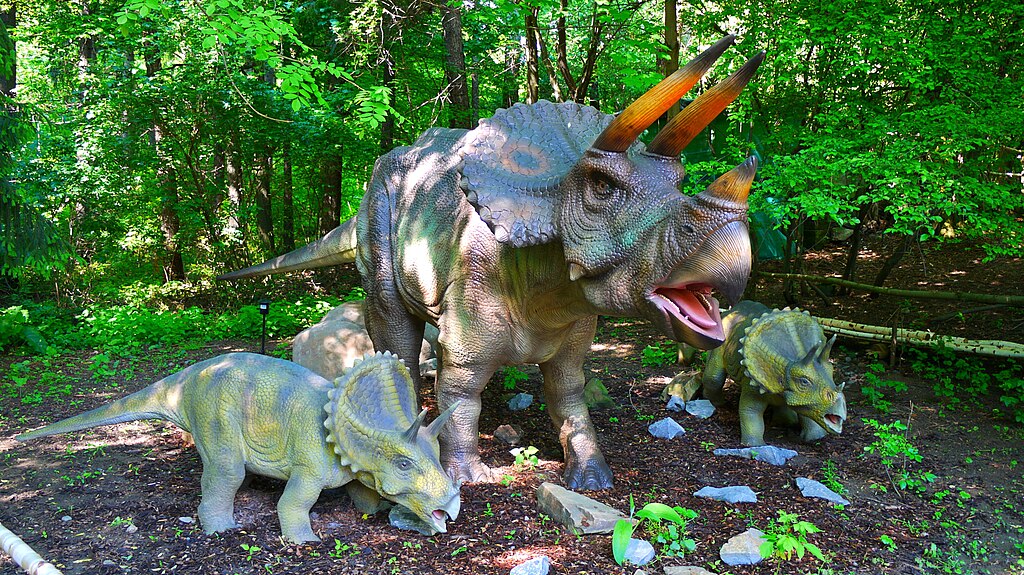
Triceratops was a massive horned dinosaur that inhabited western North America during the late Cretaceous period, approximately 68-66 million years ago. This iconic ceratopsian measured up to 30 feet in length and weighed around 12,000 pounds, featuring a massive skull that could reach over 8 feet in length—one of the largest of any land animal. The most distinctive features of Triceratops were its three facial horns (two long ones above the eyes and a shorter one on the nose) and the large bony frill that extended from the back of its skull, which likely served both for display and protection against predators like T. rex.
Triceratops was a herbivore that used its powerful beak-like mouth to crop vegetation, with hundreds of teeth arranged in “batteries” that continuously replaced themselves as they wore down. Remarkably common in the fossil record, numerous Triceratops specimens have been found throughout Montana, Wyoming, Colorado, and the Dakotas.
Stegosaurus: The Plated Puzzle

Stegosaurus roamed the western regions of North America during the Late Jurassic period, approximately 155-150 million years ago. This distinctive dinosaur reached lengths of around 30 feet and is immediately recognizable by the double row of large, upright plates that ran along its back and the four sharp spikes on its tail – a defensive weapon paleontologists call a “thagomizer.” Despite its imposing size, Stegosaurus had a remarkably small brain relative to its body mass, roughly the size of a dog’s brain in a dinosaur the size of a bus.
The function of the plates remains somewhat debated in paleontological circles, with theories suggesting they may have served for temperature regulation, defensive displays, or species recognition. Stegosaurus was a herbivore with a narrow head and small teeth suited for stripping vegetation rather than chewing it. Fossils of this iconic dinosaur have been found primarily in the Morrison Formation across Colorado, Utah, and Wyoming.
Ankylosaurus: The Living Tank
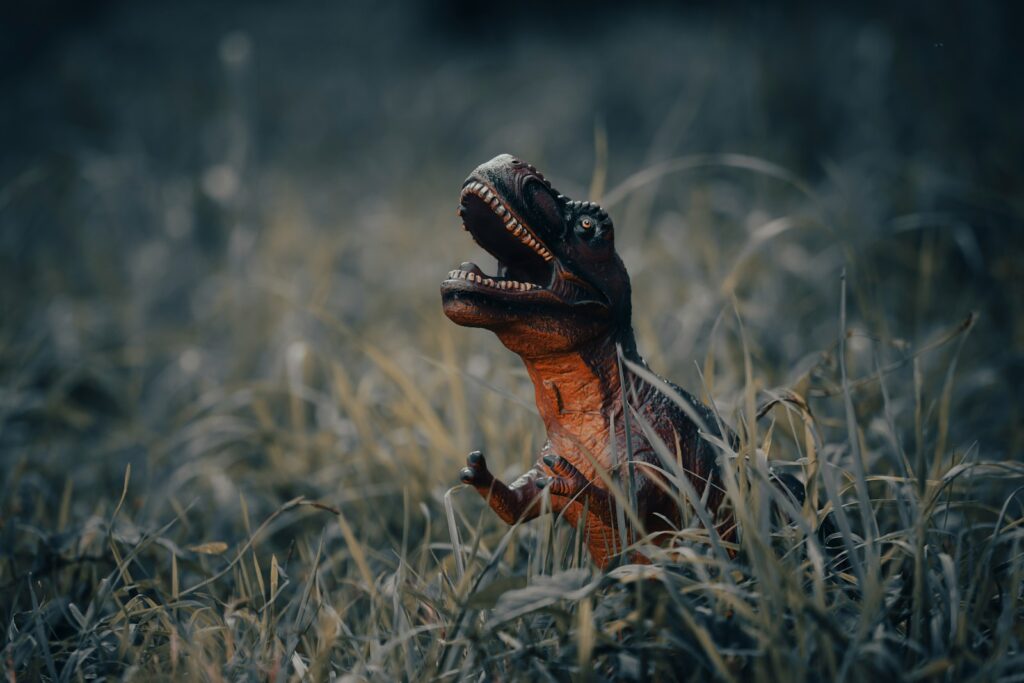
Ankylosaurus was a heavily armored dinosaur that inhabited western North America during the late Cretaceous period, approximately 68-66 million years ago. This remarkable herbivore measured up to 30 feet long and weighed around 4-5 tons, with its most distinctive feature being the extensive bony armor that covered its back and sides, forming a natural shield against predators. The most formidable part of its defensive arsenal was a large club at the end of its tail, consisting of fused bones encased in a keratin covering, capable of delivering bone-crushing blows to any would-be attacker.
Ankylosaurus had a broad, low-slung body with relatively short legs and a wide skull equipped with a beak-like mouth adapted for cropping vegetation. Despite its fame, complete Ankylosaurus skeletons are surprisingly rare in the fossil record, with most specimens being fragmentary, found primarily in Montana and Alberta, Canada. Paleontologists believe Ankylosaurus likely lived in loosely formed herds that moved slowly through the forested regions of prehistoric North America.
Velociraptor: The Swift Thief
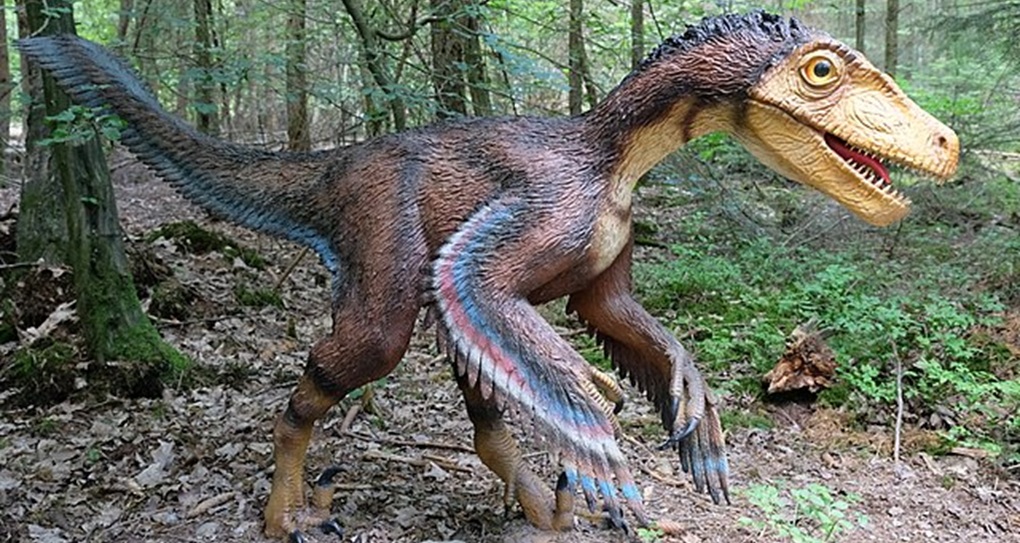
Contrary to its portrayal in popular culture, the North American Velociraptor (technically Dakotaraptor and Acheroraptor, as true Velociraptor lived in Asia) was a mid-sized dromaeosaurid that hunted across the plains and forests of western North America during the late Cretaceous period, about 66-67 million years ago. These agile predators stood approximately 3-4 feet tall at the hip and measured up to 16 feet long, making them substantially larger than their Asian cousins but smaller than depicted in famous films.
Like other dromaeosaurids, these “raptors” possessed the infamous curved, serrated claws on their second toes that could be held upright while running and deployed during attacks. Fossil evidence confirms these dinosaurs were covered in feathers, making them appear more bird-like than reptilian. Their long, stiffened tails provided balance during rapid movements, while their relatively large brains suggest they were among the most intelligent dinosaurs. Evidence indicates they were pack hunters, working together to bring down prey much larger than themselves across the prehistoric landscapes of Montana and the Dakotas.
Alamosaurus: The Giant of the South
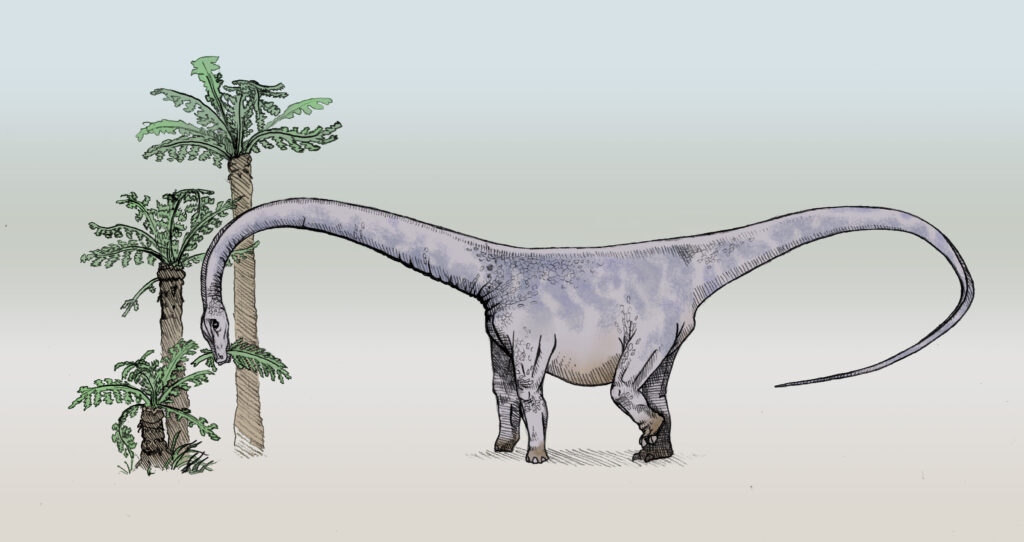
Alamosaurus was one of the last and largest sauropod dinosaurs to inhabit North America, roaming the southern regions of the continent during the late Cretaceous period, approximately 70-66 million years ago. This massive herbivore could reach lengths of 70-80 feet and may have weighed up to 50 tons, making it one of the largest land animals in North American prehistory. Unlike earlier sauropods that disappeared from North America’s fossil record in the mid-Cretaceous, Alamosaurus is believed to have migrated from South America as the two continents drew closer together.
The dinosaur possessed a relatively long neck, a proportionally small head, and pillar-like legs that supported its enormous body weight. Despite its impressive size, complete skeletons of Alamosaurus remain extremely rare, with most specimens consisting of partial remains discovered primarily in New Mexico, Texas, and Utah. Paleontologists believe Alamosaurus lived in small herds that traveled across the semi-arid environments of the American Southwest, using their height advantage to browse on vegetation inaccessible to other herbivores of the time.
Edmontosaurus: The Duck-Billed Giant

Edmontosaurus was a massive hadrosaurid or “duck-billed” dinosaur that inhabited North America during the late Cretaceous period, approximately 73-66 million years ago. This remarkable herbivore could reach lengths of up to 40 feet and weigh around 4 tons, making it one of the largest duck-billed dinosaurs known to science. The most distinctive feature of Edmontosaurus was its broad, flattened snout that contained hundreds of teeth arranged in complex dental batteries perfect for processing tough plant material. Unlike some other hadrosaurs, Edmontosaurus lacked a bony crest on its head, though some specimens show evidence of a fleshy comb or wattle.
Perhaps most fascinating are the “mummified” Edmontosaurus specimens that have preserved skin impressions, revealing a complex pattern of scales and tubercles across its body. These dinosaurs were likely highly social, traveling in large herds across the coastal plains of western North America, and their fossils have been found abundantly throughout Alberta, Canada, and the western United States, particularly in Montana, Wyoming, and the Dakotas.
Allosaurus: The Jurassic Predator
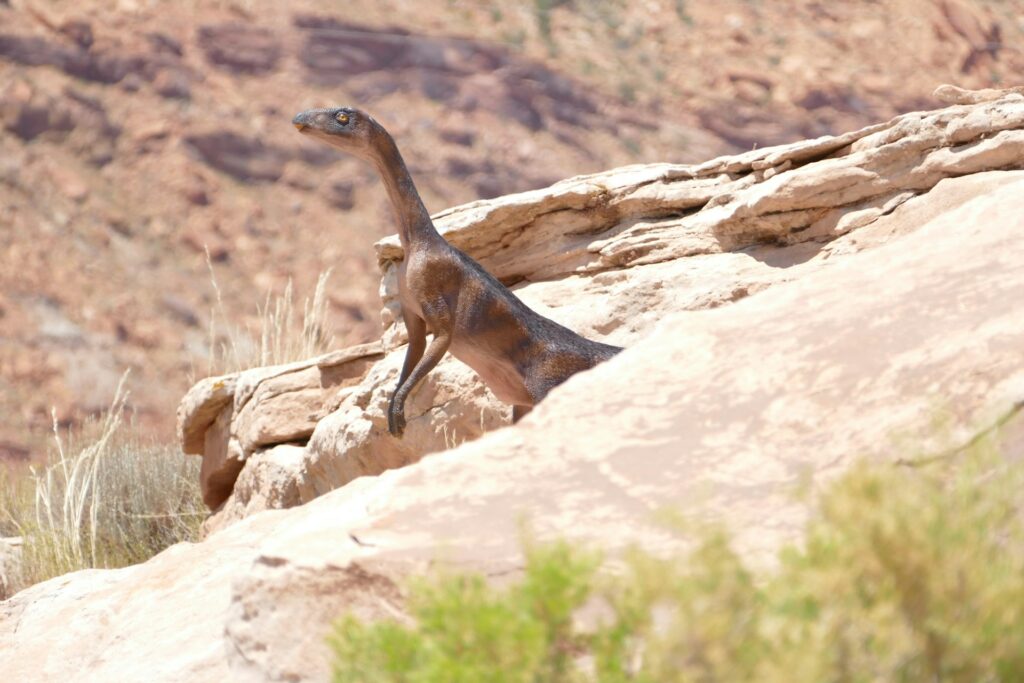
Allosaurus was the dominant predator of North America during the Late Jurassic period, approximately 155-145 million years ago, predating Tyrannosaurus rex by nearly 80 million years. This formidable theropod typically measured around 28-33 feet in length and weighed approximately 1.5-2 tons, featuring a large skull equipped with dozens of serrated, knife-like teeth. Unlike the later T. rex, Allosaurus had three clawed fingers on each hand, which it used to grasp and manipulate prey. One of Allosaurus’s most distinctive features was the pair of small horns or crests above its eyes, which may have been used for display or species recognition.
Paleontologists believe Allosaurus was likely an ambush predator that targeted large herbivorous dinosaurs, including sauropods and stegosaurs. The Cleveland-Lloyd Dinosaur Quarry in Utah has yielded remains of at least 46 Allosaurus individuals, suggesting these predators may have been drawn to the area by trapped prey, only to become trapped themselves. Allosaurus fossils have been discovered throughout the Morrison Formation in Colorado, Utah, Wyoming, and New Mexico, making it one of the best-understood large theropod dinosaurs.
Parasaurolophus: The Crested Trumpeter
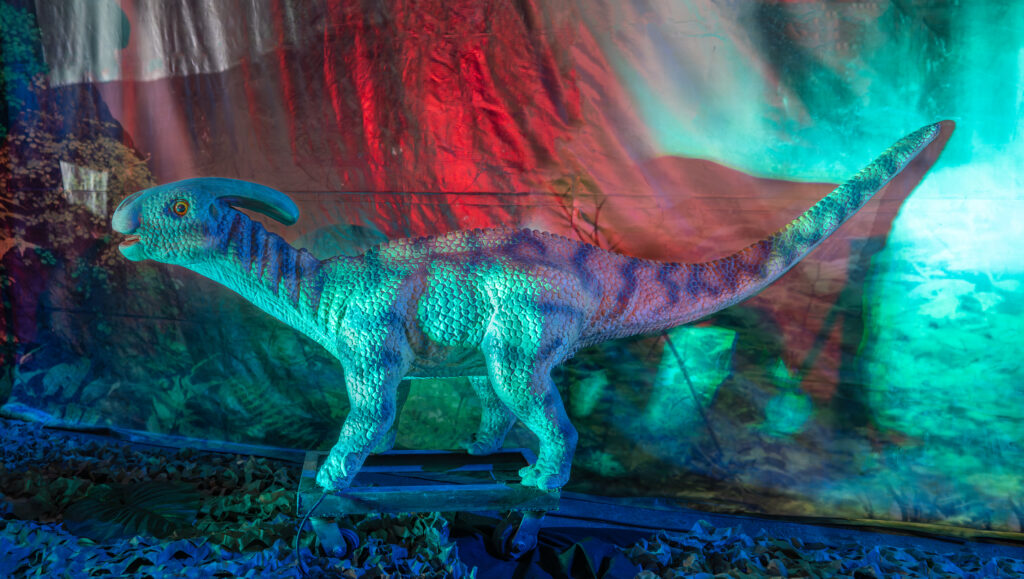
Parasaurolophus was a striking hadrosaurid dinosaur that lived in western North America during the Late Cretaceous period, approximately 76-73 million years ago. This herbivore reached lengths of about 30 feet and weighed around 2.5 tons, but its most distinctive feature was the enormous backward-curving hollow crest that extended from the back of its skull, reaching up to 6 feet in length. This remarkable structure contained elongated nasal passages that wound from the nostrils through the crest and back into the head before connecting to the throat and lungs.
Scientific studies suggest this elaborate crest served as a resonating chamber that allowed Parasaurolophus to produce deep, trumpet-like calls for communication within herds or between potential mates. Like other hadrosaurs, Parasaurolophus was primarily bipedal but could drop to all fours for feeding or slow movement, and possessed hundreds of tightly packed teeth for processing tough vegetation. Fossils of Parasaurolophus have been found in New Mexico, Utah, and Alberta, Canada, though complete specimens remain relatively rare compared to other duck-billed dinosaurs of North America.
Pachycephalosaurus: The Dome-Headed Ramming Machine
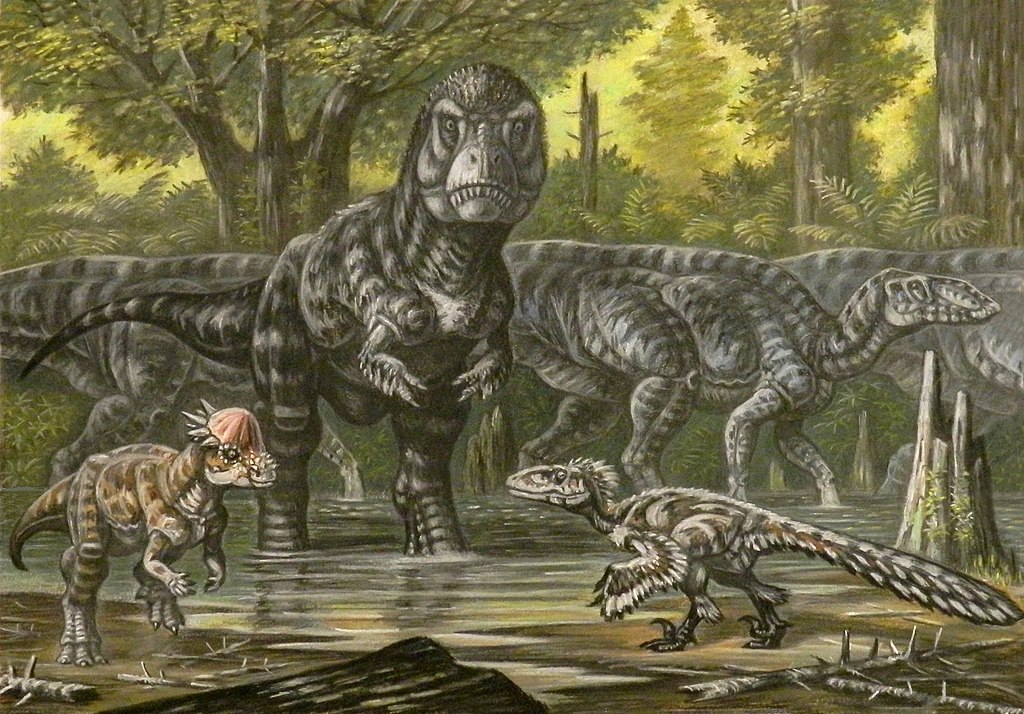
Pachycephalosaurus was one of the most distinctive dinosaurs to roam North America during the late Cretaceous period, approximately 70-66 million years ago. This bipedal herbivore measured around 15 feet in length and is immediately recognizable by its most famous feature – a massive, dome-shaped skull roof that could be up to 10 inches thick. The thick bone dome was surrounded by a series of small bony knobs and spikes, creating a formidable defensive structure. For decades, paleontologists believed Pachycephalosaurus used its reinforced skull for head-butting contests similar to modern bighorn sheep, though recent research suggests the dome may have been better suited for flank-butting rather than direct head-to-head collisions.
Unlike many other dinosaurs known from multiple specimens, Pachycephalosaurus remains relatively rare in the fossil record, with most discoveries limited to isolated skull caps rather than complete skeletons. These fascinating dinosaurs lived alongside Tyrannosaurus rex and Triceratops during the final days of the dinosaur age, with fossils primarily found in Montana, South Dakota, and Wyoming, as well as Alberta and Saskatchewan in Canada.
Albertosaurus: The Northern Hunter
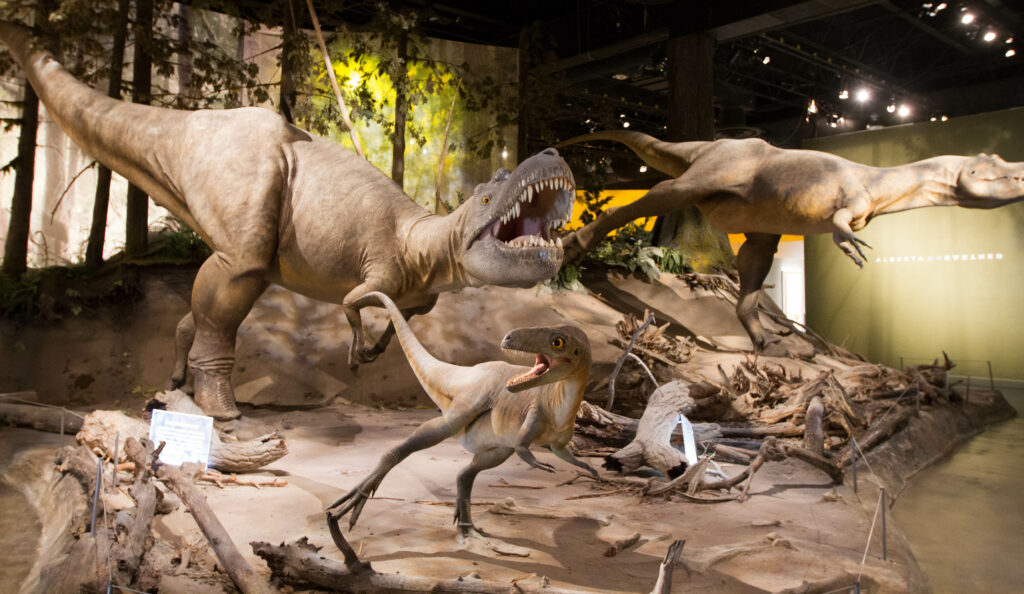
Albertosaurus was a large tyrannosaurid dinosaur that dominated the northern regions of western North America during the Late Cretaceous period, approximately 70 million years ago, predating its more famous relative, Tyrannosaurus rex, by several million years. This formidable predator measured approximately 30 feet in length and weighed around 1.5-2 tons, making it somewhat smaller but more lightly built than T. rex.
Albertosaurus featured the characteristic tyrannosaurid body plan with a massive skull balanced by a long tail, powerful hind limbs, and notoriously tiny forelimbs with two-fingered hands. The skull of Albertosaurus housed dozens of serrated teeth that could exert tremendous bite force, though not quite as powerful as that of T. rex. One particularly remarkable fossil discovery in Alberta, Canada, uncovered the remains of at least 26 Albertosaurus individuals of different ages, providing strong evidence that these predators lived and possibly hunted in family groups or packs.
This social behavior would have allowed them to bring down larger prey than a single individual could handle alone. The geographic range of Albertosaurus appears to have been limited primarily to what is now Alberta and possibly Montana, suggesting these dinosaurs may have preferred certain habitats within the broader North American landscape.
Deinonychus: The Terrible Claw
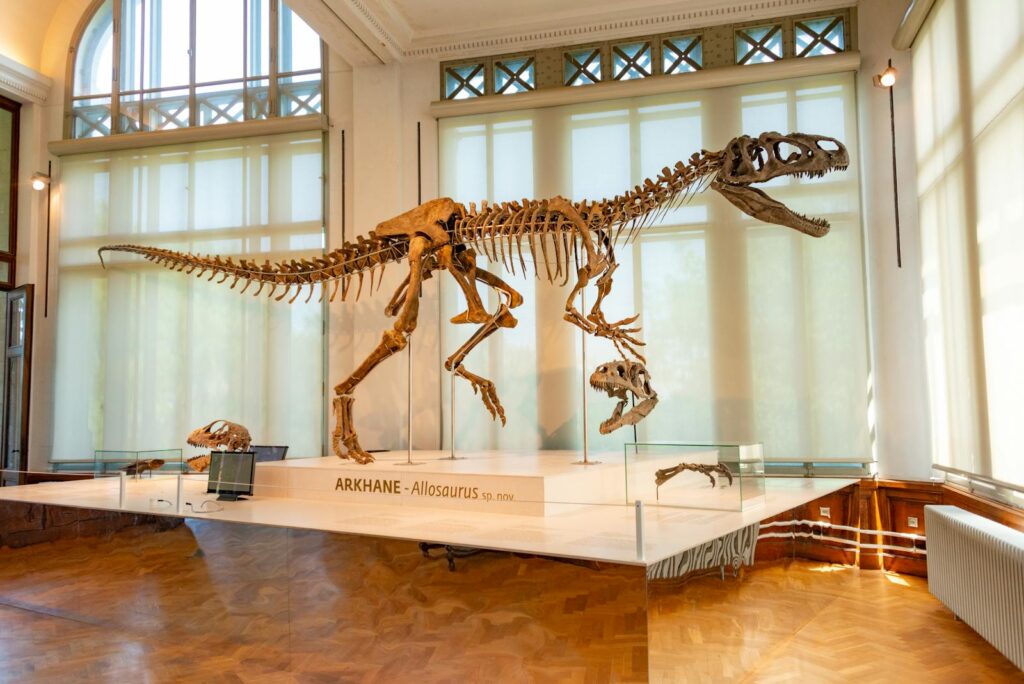
Deinonychus was a mid-sized dromaeosaurid dinosaur that hunted across North America during the Early Cretaceous period, approximately 115-108 million years ago. This agile predator measured about 11 feet in length and stood roughly 3 feet tall at the hip, making it significantly larger than Velociraptor but smaller than later North American dromaeosaurids.
The most distinctive feature of Deinonychus was the large, sickle-shaped claw on the second toe of each foot, which could be raised while running and deployed as a slashing weapon when attacking prey. Unlike earlier interpretations that portrayed dinosaurs as slow and lumbering, the 1969 description of Deinonychus by paleontologist John Ostrom revolutionized our understanding of dinosaurs as active, agile, and possibly warm-blooded animals. This paradigm shift laid the groundwork for the modern view of dinosaurs as the ancestors of birds.
Fossil evidence suggests Deinonychus was likely covered in feathers, though direct preservation of feathers has not yet been found for this specific genus. Multiple Deinonychus individuals have been discovered in association with the remains of the plant-eating dinosaur Tenontosaurus, suggesting they may have hunted in coordinated packs to bring down larger prey across what is now Montana, Wyoming, and Oklahoma.
Maiasaura: The Good Mother Lizard
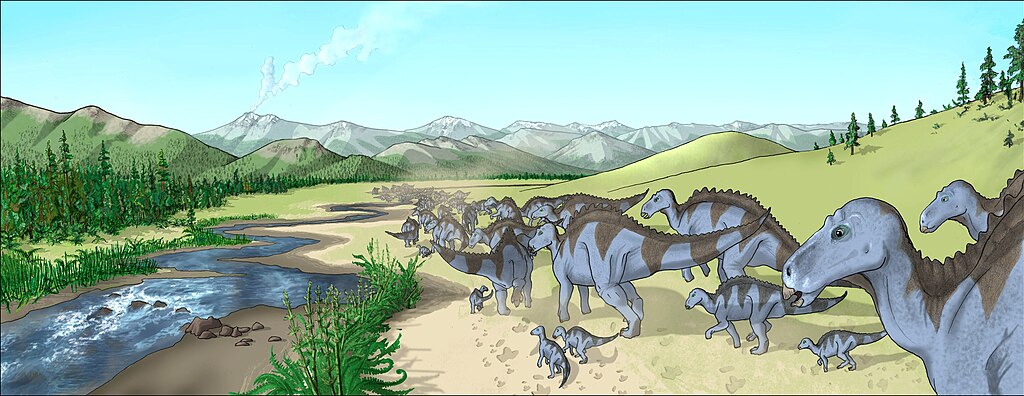
Maiasaura was a large hadrosaurid dinosaur that lived in what is now Montana during the Late Cretaceous period, approximately 76.7 million years ago. This herbivorous dinosaur measured around 30 feet in length and weighed about 3-4 tons when fully grown, with the characteristic duck-billed mouth typical of its family. What makes Maiasaura truly extraordinary is the wealth of evidence about its reproductive and social behavior, which revolutionized our understanding of dinosaur parenting.
In 1978, paleontologist Jack Horner discovered the first Maiasaura nesting ground, containing eggs, hatchlings, juveniles, and adults, providing unprecedented insights into dinosaur life cycles. The discovery revealed that Maiasaura built massive colonial nesting sites with nests spaced about 23 feet apart, suggesting coordinated social behavior. The nests themselves were bowl-shaped depressions about 6-8 feet in diameter, containing up to 30-40 eggs arranged in spiral patterns.
Most significantly, the discovery of nestbound babies with worn teeth indicated the parents brought food to the nest and cared for their young after hatching, a behavior reflected in the dinosaur’s name, which means “good mother lizard.” This evidence of parental care directly contradicted earlier views of dinosaurs as cold, unintelligent reptiles and helped establish the modern understanding of complex dinosaur behavior.
Conclusion

The diverse array of dinosaurs once inhabited North America represents an extraordinary chapter in the continent’s natural history. From the towering Alamosaurus to the pack-hunting Deinonychus, these prehistoric giants occupied various ecological niches across changing landscapes for over 150 million years. Their fossilized remains, preserved in rock formations from Montana to New Mexico, continue to provide scientists with valuable insights.




